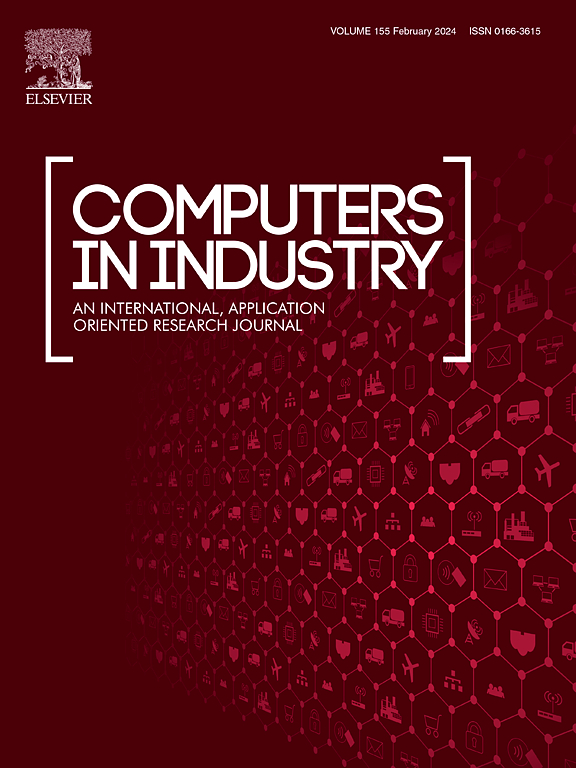SmartARW: A text-aware smart mobile industrial augmented reality (AR) wiring assembly system
IF 9.1
1区 计算机科学
Q1 COMPUTER SCIENCE, INTERDISCIPLINARY APPLICATIONS
引用次数: 0
Abstract
Augmented reality (AR) has demonstrated its potential by delivering intuitive guidance on the workbench directly, alleviating the operators’ mental load for traditional paper-based wiring assembly tasks while ensuring procedural correctness. Nevertheless, current industrial AR wiring applications mainly focus on superimposing the virtual models with the commercial AR glass, lacking practical adaptability due to ergonomic issues derived from their weight, and human intervention is also necessary to monitor the current wiring harness and activate ongoing procedural progress. To bridge this gap for real-world applications, this article proposes human-centric SmartARW: a text-aware smart mobile industrial AR wiring assembly system. Firstly, a mobile AR wiring assembly system is established with the off-the-shelf tablet and sensor module, followed by accurate system calibration among different components and self-contained markerless motion tracking. Then, a closed-loop confirming strategy enabled lightweight text-aware network is proposed and integrated into the mobile AR system, as well as lots of shop-floor datasets are prepared and augmented to improve the context-aware performance, thus the status of the ongoing wiring activity can be perceived accurately even encountered challenge scenarios while activating the corresponding AR instructions automatically. Finally, extensive quantitative and qualitative experiments are carried out to illustrate that the proposed SmartARW has strong usability and can provide superior performance for human-centric smart wiring assembly action.
SmartARW:文本感知智能移动工业增强现实(AR)布线装配系统
增强现实(AR)通过直接在工作台上提供直观的指导,减轻了操作员对传统纸质布线组装任务的心理负担,同时确保了程序的正确性,从而展示了其潜力。然而,目前的工业AR布线应用主要集中在将虚拟模型与商业AR玻璃叠加,由于其重量引起的人体工程学问题,缺乏实际适应性,并且人工干预也是必要的,以监测当前的线束并激活正在进行的程序进度。为了在实际应用中弥补这一差距,本文提出了以人为中心的SmartARW:一种文本感知的智能移动工业AR布线装配系统。首先,利用现成的平板电脑和传感器模块建立移动AR布线装配系统,然后在不同组件之间进行精确的系统校准,并进行独立的无标记运动跟踪。然后,提出了一个闭环确认策略支持的轻量级文本感知网络,并将其集成到移动AR系统中,并准备和增强了大量的车间数据集,以提高上下文感知性能,从而在遇到挑战场景时也能准确地感知正在进行的布线活动的状态,同时自动激活相应的AR指令。最后,进行了大量的定量和定性实验,以说明所提出的SmartARW具有很强的可用性,并且可以为以人为中心的智能布线装配动作提供优越的性能。
本文章由计算机程序翻译,如有差异,请以英文原文为准。
求助全文
约1分钟内获得全文
求助全文
来源期刊

Computers in Industry
工程技术-计算机:跨学科应用
CiteScore
18.90
自引率
8.00%
发文量
152
审稿时长
22 days
期刊介绍:
The objective of Computers in Industry is to present original, high-quality, application-oriented research papers that:
• Illuminate emerging trends and possibilities in the utilization of Information and Communication Technology in industry;
• Establish connections or integrations across various technology domains within the expansive realm of computer applications for industry;
• Foster connections or integrations across diverse application areas of ICT in industry.
 求助内容:
求助内容: 应助结果提醒方式:
应助结果提醒方式:


